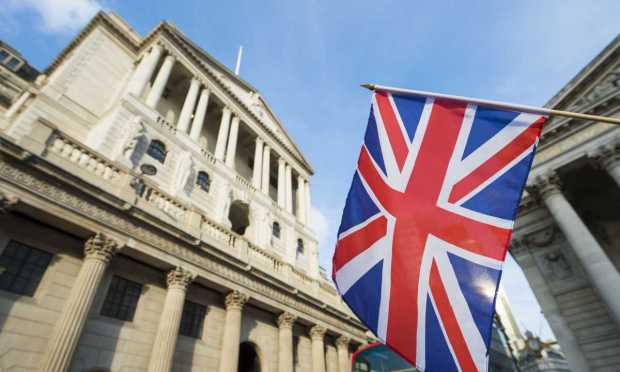Bank of England Aiming to Launch Digital Pound by 2030

The Bank of England and U.K. Treasury are exploring the feasibility of an official “Britcoin.”
This, as a formal consultation launched Tuesday (Feb. 7) aims to develop guardrails around introducing a central bank digital currency (CBDC) for the U.K. that may one day sit alongside physical banknotes.
The so-called virtual currency, which is also being referred to as the “digital sterling” or “digital pound,” would be issued by the Bank of England (BoE) and backed by the government.
“At this stage, we judge it likely that the digital pound will be needed in the future. It is too early to decide whether to introduce the digital pound, but we are convinced preparatory work is justified,” states the consultation paper.
The potential digital Britcoin would not be built until at least 2025, pending the path charted forward by the consultation, which indicated a hypothetical launch of the next generation currency by the end of the decade.
The Way People Pay for Things Is Changing
As digital payments become more common, and the use of cash declines, governments around the world are exploring CBDCs as one potential way to keep national governments involved in the circulation and supply of money.
Some 114 countries, representing 95% of global GDP, are currently investigating what a CBDC might look like for their nation. Five dozen countries are already in an advanced phase of this exploration, with a national CBDC either under development, being piloted, or already launched.
This year’s Davos World Economic Forum saw the launch of a Universal Digital Payments Network (UDPN), purpose-built to allow for cross-border digital currency payments between nations using CBDCs.
As consumers shift to card payments backed by companies and not governments, CBDCs are increasingly being viewed as a way for national governments and central banks to stay ahead of innovations, as well as disruptions, in the future of payments and money movement.
“The money we issue as the UK’s central bank is the anchor of confidence in our monetary system,” reads the BoE and U.K. Treasury consultation. “This type of money supports the UK’s monetary and financial stability. Today, banknotes are the only type of money we provide for the public to use. Having a digital pound could help us to keep providing this anchor for the UK.”
Still, the prospect of an electronic currency issued by the U.K. isn’t without its detractors.
“We have yet to hear a convincing case for why the UK needs a retail CBDC,” says a report by the House of Lords Economic Affairs Committee, which goes on to emphasize that it views the prospect of a digital pound as being nothing more than “a solution in search of a problem.”
Per the House of Lords’ Committee, “Central banks are concerned that big tech companies could use the same technology to issue their own digital currencies which could be popular enough to compete with central banks and their control of monetary systems. While we agree this is a risk, the introduction of a CBDC may not be a necessary or complete response.”
Following today’s publication of the CBDC consultation paper, the BoE and U.K. Treasury together are welcoming views and comments on the initiative’s feasibility through June 7, 2023, at which point the digital pound project will enter its next phase.
CBDCs Come With Their Own Risks
As PYMNTS has previously covered, certain national CBDCs, despite their relatively recent launch, are already being described as “highly inactive.”
Shaunt Sarkissian, group chief markets officer at The Bank of London, told PYMNTS’ CEO Karen Webster at the end of last month (Jan. 31) that at the end of the day, the success of CBDCs will rely on their adoption by the ultimate end-user, consumers. “The consumer will see if there’s value, if they like it — they will be the ones who decide,” he said.
Hampering widespread adoption, as well as all-in lawmaker support of national CBDCs are fears that governments could use the centralized fiat currency to collect personal information from citizens, leveraging the digital currency as a surveillance tool to track national populations through their recorded transactions.
Lawmakers in the U.S. have already introduced legislation aimed at protecting financial privacy in the event of a U.S. “digital dollar” being issued.
Digital evolutions typically bring with them a bevy of new vulnerabilities, too. Per the House of Lords’ report, CBDCs represent, “the creation of a centralized point of failure that would be a target for hostile nation state or criminal actors.”
There are also worries that CBDCs could lead to further financial exclusion for vulnerable households, no matter the nation they reside in, who generally depend on physical cash to a greater degree than higher-income members of the population.
Still, progress marches on — and for many governments and their citizens, it may seem archaic to keep moving money through systems and infrastructure designed for a legacy era of paper money that is increasingly losing its relevancy. After all, 2030 isn’t so far away.
